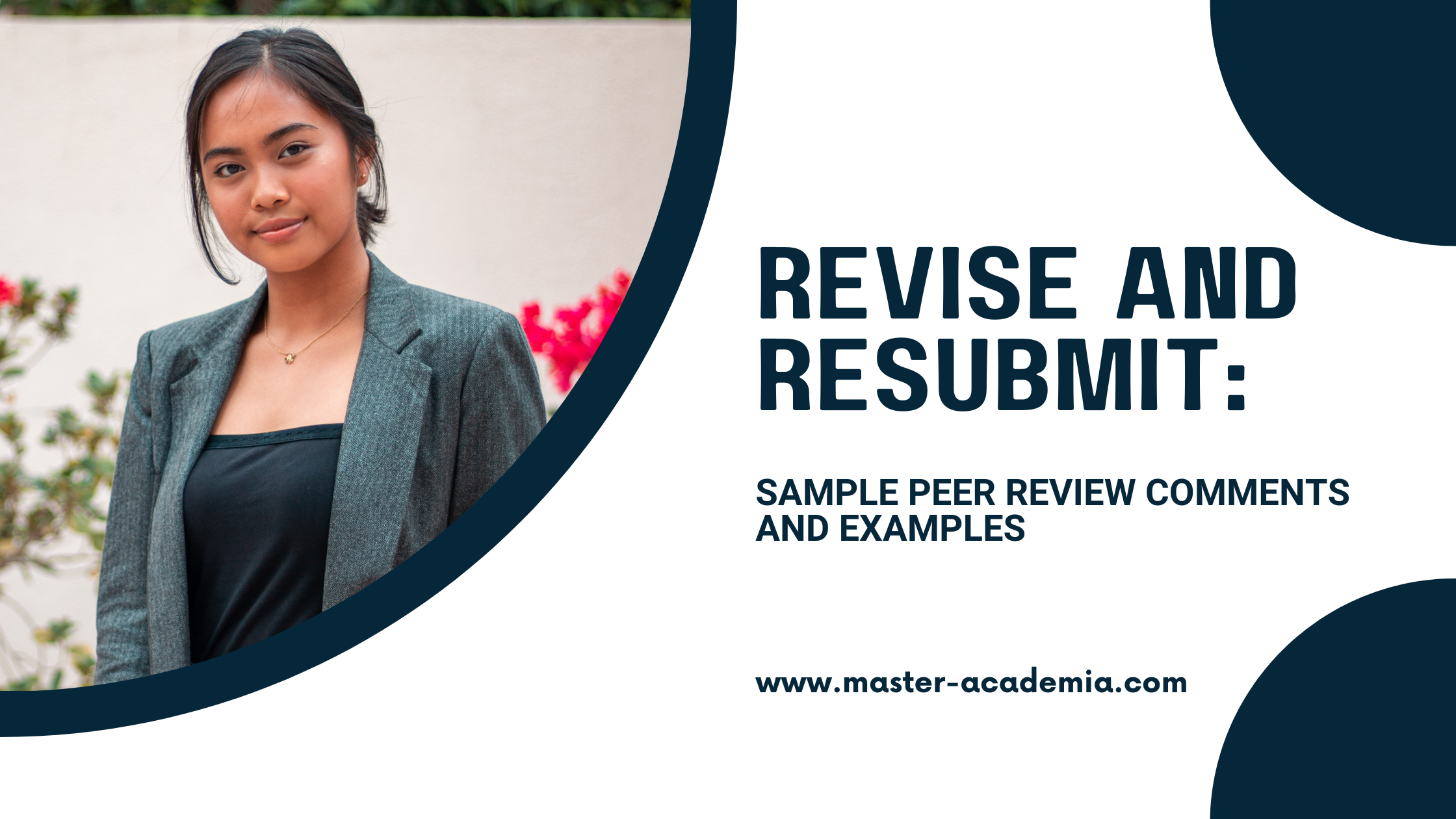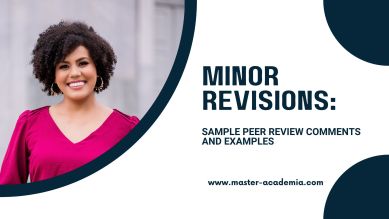
A ‘revise and resubmit’ decision means that a manuscript has potential but cannot be considered for publication in its current form. Learn more about the reasons for a ‘revise and resubmit’ decision, and have a look at sample peer review comments and examples of ‘revise and resubmit’ decisions. It can help you to make the right decision and to properly convey your feedback to the manuscript authors.
Contents
What a ‘revise and resubmit’ decision entails
Manuscript authors are often disappointed when they receive a ‘revise and resubmit’ decision on their manuscript. However, it is actually a good sign: It means that the authors have one foot in the door and get a second chance to submit their work to a specific journal.
As a peer reviewer, you decide on a ‘revise and resubmit’ decision if you think that a manuscript has value and potential, but requires considerable changes before it can be considered for publication.
Thus, in contrast to a ‘reject’ decision, ‘revise and resubmit’ conveys a much more positive message to the authors. At the same time, it differs from ‘major revisions’.
In contrast to ‘major revisions’, a ‘revise and resubmit’ decision is more cautious. As a reviewer, it means that you are not sure whether the authors will manage to adequately implement all required changes.
Therefore, you encourage the authors to rework their paper and re-apply to the journal again for a new round of peer review.
You may also like: How to peer review an academic paper
Common reasons for a ‘revise and resubmit’ decision
There are six common reasons for a ‘revise and resubmit’ decision:
- Trying to accomplish too much: Many manuscripts are over-ambitious, to the detriment of a clear research question and contribution.
- Structural issues: Manuscripts which raise interesting points but have several structural issues (unclear titles and sections, mismatching arguments, etc.) often receive ‘revise and resubmit’ instead of ‘major revisions’. The reason: fixing these issues is not straightforward. Thus, even with the provided feedback, it is unclear whether the authors can bring the paper to the next level.
- Insufficient theoretical framework and literature review: Manuscripts may touch upon interesting literature and theoretical discussions, but do not present a clear and comprehensive theoretical framework, stance or contribution.
- Weak presentation of empirical data: Some manuscripts draw on impressive quantitative or qualitative datasets, but do a bad job at presenting empirical insights convincingly.
- Lacking depth in the discussion: Some manuscripts lack an in-depth analysis, draw hasty conclusions or don’t reflect on practical implications or future research avenues. As the discussion section plays a crucial role in academic papers, it can lead to a ‘revise and resubmit’ decision.
Sample peer review comments for a ‘revise and resubmit’ verdict
“I encourage the authors to revise their manuscript and to resubmit it to the journal.”
“In its current form, this paper cannot be considered for publication. However, I see value in the research approach and encourage the authors to revise and resubmit their manuscript.”
“With the right changes, I believe that this manuscript can make a valuable contribution to the field of …”
“The paper addresses a valuable topic and raises interesting questions. However, the logic of the argument is difficult to follow.“
“The manuscript tries to achieve too many things at the same time. The authors need to narrow down their research focus.”
“The authors raise many interesting points, which makes it difficult for the reader to follow their main argument. I recommend that the authors determine what their main argument is, and structure their manuscript accordingly.”
“The literature review raises interesting theoretical debates. However, in its current form, it does not provide a good framework for the empirical analysis.”
“A clearer theoretical stance will increase the quality of the paper.”
“The manuscript draws on impressive data, as described in the methodology. However, the wealth of data does not come across in the analysis. My recommendation is to increase the number of interview quotes, figures and statistics in the empirical analysis.”
“The authors draw several conclusions which are hard to connect to their empirical findings.“
“The authors are advised to critically reflect on the generalizability of their research findings.”
“The manuscript needs to better emphasise the research relevance and its practical implications.”
“It is unclear what the authors consider their main contribution to the academic literature, and what they envisage in terms of recommendations for further research.”
Reviewer comments ‘revise and resubmit’ example 1
| The manuscript discusses the importance of community initiatives in climate change mitigation. Based on an impressive empirical dataset, the authors argue that community initiatives should receive more funding and support, demonstrating the impact they can have on achieving environmental goals. Topic-wise, I believe that the manuscript is a great fit for the journal. However, in its current form, it cannot be considered for publication due to several shortcomings: 1. The literature review touches upon interesting theoretical debates on climate change. However, some of these debates are rather disconnected from the actual focus of the paper, namely community initiatives. To provide a good frame for the empirical analysis, I recommend that the authors rewrite their literature review with a stronger focus on community initiatives and the interplay between funding and project outcomes. It may also be good to critically reflect on the roles and responsibilities of the state, civil society and market actors in climate change mitigation. This would also allow the authors to clarify their theoretical stance and highlight their theoretical contribution. 2. The authors collected an impressive dataset, including interviews, a survey and longitudinal financial data. However, the empirical insights are not presented convincingly, and the wealth of collected data does not come through in the analysis. For instance, no interview quotes are shown. This should be improved. 3. The authors draw several conclusions which are hard to connect to their empirical findings. Furthermore, I recommend that the authors critically reflect on the generalizability of their research findings. Despite these points of critique, I see value in the research approach and data. Therefore, I strongly encourage the authors to revise and resubmit their manuscript. With the right changes, I believe that this manuscript can make a valuable contribution to our existing knowledge of community initiatives in climate change mitigation. |
Reviewer comments ‘revise and resubmit’ example 2
| The manuscript addresses important topics but tries to achieve too many things at the same time. Therefore, it is also difficult for the reader to follow the main argument of this paper. The authors need to narrow down their research focus. I recommend that they determine what their main argument is, and structure their manuscript accordingly. Just one of the three questions raised in the introduction provides enough material to make a valuable scientific contribution. Personally, I believe that Question 2 may be of particular interest to readers of the journal, and has potential to be turned into a paper of its own. I would look forward to reviewing a resubmitted version of this paper. |



